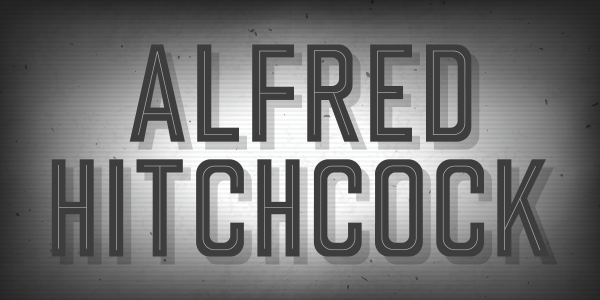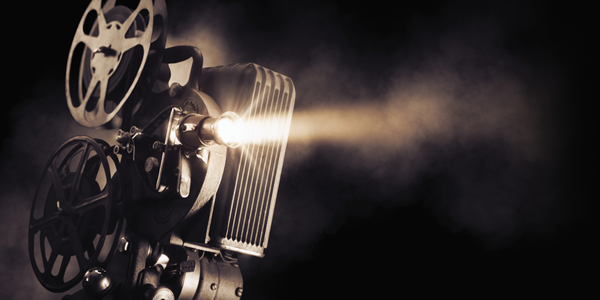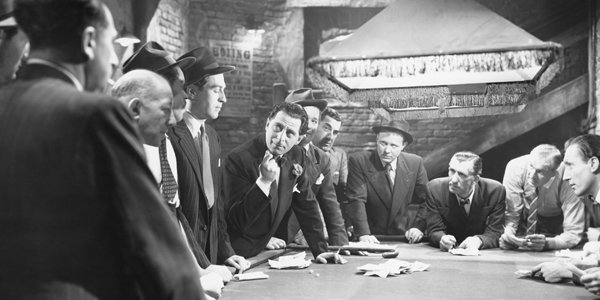Alfred Hitchcock & Cigars
If you are a fan of classic film, or went to film school, you have likely seen an iconic magazine cover turned into a poster of Alfred Hitchcock with a long cigar in his mouth and a (stuffed) black bird perched at the other end. It was the cover of Paris Vogue magazine with the title, “By Hitchcock.” I first saw the poster in the apartment of a friend in New York City. He was a film major, now an agent to the stars. Hitchcock, among the most celebrated film directors ever, almost always had a cigar in his mouth, and a bowler hat atop his head. He was, for good reason, known as the “Master of Suspense.”
Alfred Hitchcock’s Favorite Cigar
The large cigar Hitchcock posed with for Vogue was unusual. He favored the Cuban Montecristo No. 5, a Petit Corona, 4 inches by 40-ring gauge; or sometimes a longer one, like the Montecristo No. 1.
Hitchcock smoked all his adult life and constantly while directing his more than 50 films. He made cameo appearances in 37 of his movies, at least once seen puffing a cigar, in 1947’s The Paradise Case. Often, he would not face the camera, but his bald scalp gave him away. Frequently, he carried a musical instrument. In The Birds, he is seen walking dogs out a door as Tippi Hedren enters. Occasionally, he was just a silhouette, an image that became something of a trademark.
Who Was Alfred Hitchcock?
Hitchcock was born in Leytonstone, England, just outside of London in 1899. He was the youngest of three children and grew up, by his own account, without any playmates. Hitchcock enjoyed telling a story of his father sending him to the local police station with a note, which Hitchcock handed to a policeman. The cop locked young Alfred in a cell for a few minutes, telling him, “This is what we do with naughty boys.” Hitchcock said this episode left him “scared stiff of anything to do with the law.” He wouldn’t even drive for fear of getting a ticket.
Hitchcock attended a Jesuit school and was reportedly an average student, though he said he excelled at languages. His favorite subject was geography. He credits the Jesuits with giving him a foundation for his later success. “The Jesuits taught me organization, control and, to some degree, analysis.”
Creative Beginnings
Hitchcock began his creative life at a publication where he wrote advertising copy. He said later on that the love of this work was his “first step towards cinema.” Hitchcock found out that Paramount Pictures was opening a new studio in London. The first film was called Sorrows for Satan. Hitchcock produced some drawings and title cards for the movie, which he sent in for review. Paramount liked what it saw and hired him to be a title-card designer.
Hitchcock Makes a Movie
Hitchcock’s first movie came in 1927. It was called The Lodger: A Story of the London Fog and it was a critical and commercial hit. The story was a thriller, based on the hunt for a serial killer who targeted young, blonde women. Was this the start of the pattern of blondes starring in his movies? The film also featured Hitchcock’s first cameo. In 1939, Hitchcock signed a seven-year deal with the legendary David O. Selznick. A year later, their first film, Rebecca, won the Oscar for best picture, beating another Hitchcock movie, Foreign Correspondent. Hitchcock would go on to receive five nominations as best director.
Among Hitchcock’s more famous films were Rear Window (1954; starring Jimmy Stewart and Grace Kelly); To Catch a Thief (1955; starring Grace Kelly and Cary Grant); Vertigo (1958; starring Kim Novak and Jimmy Stewart); North by Northwest (1959; starring Cary Grant and Eva Marie Saint); Psycho (1960; starring Anthony Perkins and Janet Leigh); and The Birds (1963; starring Tippi Hedren and Rod Taylor). The last two were arguably Hitchcock’s most successful and creepiest, each with iconic scenes that horrify.
Hitchcock died in 1980. His films were nominated 46 times and won six Academy Awards for best picture. He never won as best director.







